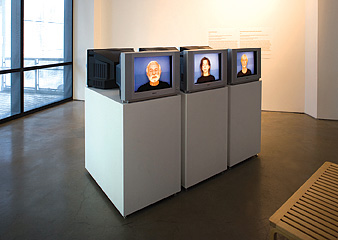For her 2005 installation, Genealogy of the Supermarket, Nina Katchadourian hung a red damask–covered wall with framed portraits of such iconic grocery-store denizens as Aunt Jemima, Betty Crocker, and Mr. Clean. She arranged the images so that they created a fantasy family tree , with the buxom blonde St.Pauli Girl proffering beer steins beside her demure Sun-Maid Raisin sister with a basket of grapes.

In other pieces, Katchadourian has substituted bird songs for car alarms and translated the sound of popping corn into Morse code. She used red thread to repair a spider's web and documented the spider's (unsurprising) rejection of her efforts in photographs. ArtReview has called her "a connoisseur of ingenious but doomed arrangements, senseless hierarchies, crackpot taxonomies."
"I approach things in an investigative spirit," says the Brooklyn-based artist, who works with any medium that suits her aims—photography, video, sound, found objects, sculpture. "What I always say is, 'Pick the right tool for the right job.' It's never important to stick to one medium—you let the concept guide you.... There aren't any rules around it."

Katchadourian's work has been shown in London, Paris, Barcelona, and Zagreb, and she received a 2006 retrospective at Skidmore College's Tang Museum . Many recent projects focus on the relationship between humans and the natural world. In Zoo (2007) , videotaped over the course of eight years at zoos around the world, video monitors and wall projections unfurl a disorienting array of animal sights and sounds.
"It's really just dumb stuff that surrounds us that's the starting point—stuff that's overlooked," she said in a phone interview this winter. "My job as an artist is really just to notice the things that I'm noticing—and to find ways to show those things to other people."
Julia M. Klein is a Philadelphia-based cultural reporter and critic.





